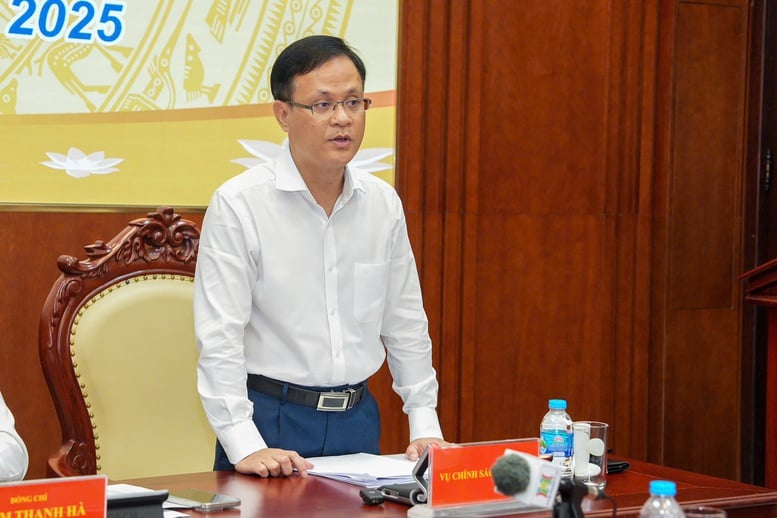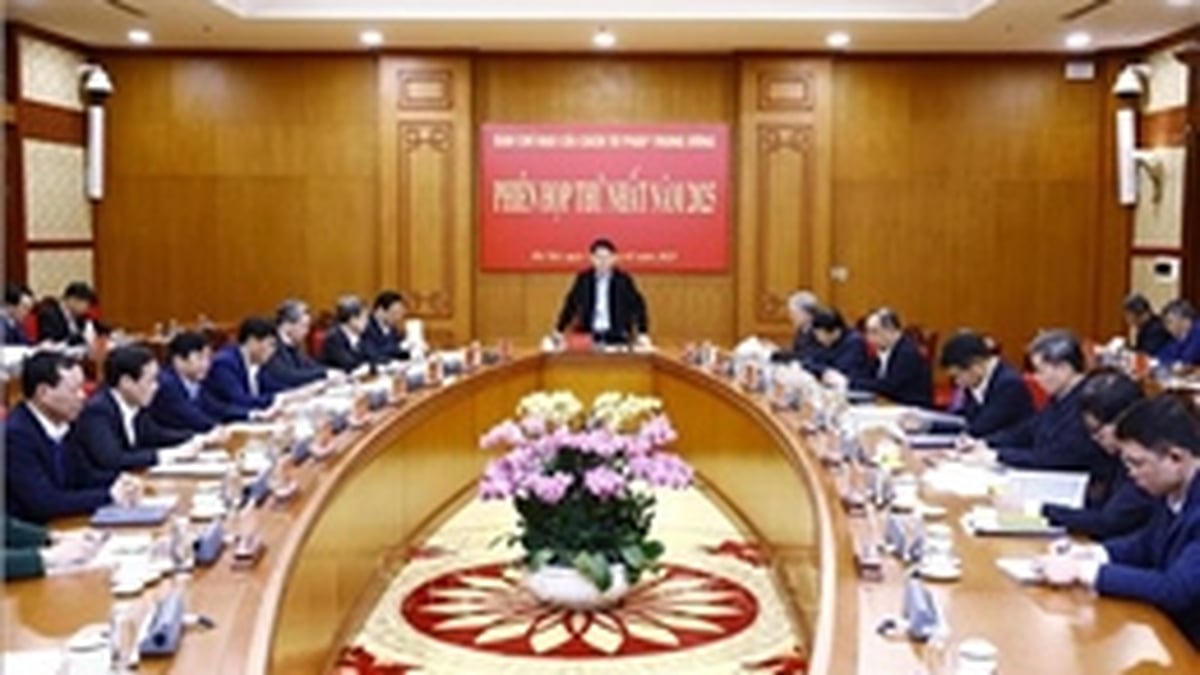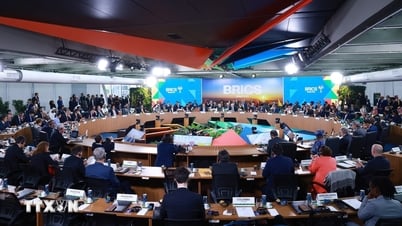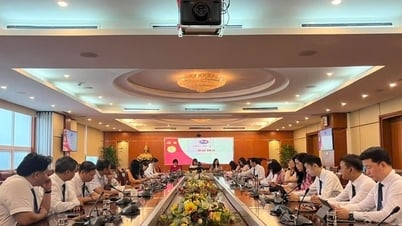
Mr. Pham Chi Quang - Director of Monetary Policy Department, State Bank of Vietnam (SBV) - Photo: VGP/HT
The roadmap to remove the credit ceiling is being gradually implemented.
At the press conference to inform about the results of banking activities in the first 6 months of 2025 held on July 8 in Hanoi , the issue of eliminating the credit ceiling tool (also known as the credit "room") attracted great attention. Mr. Pham Chi Quang - Director of the Monetary Policy Department, State Bank of Vietnam (SBV) said that the credit "room" mechanism has been widely applied since 2012 to control the situation of overheating credit growth.
According to Mr. Pham Chi Quang, during the previous period of loose monetary policy, the credit growth rate exceeded 54% in one year. This led to many credit institutions facing the risk of losing liquidity, forcing the State Bank to apply strong administrative measures to handle the situation of unhealthy competition in interest rates, thereby preventing bad debt risks and ensuring system safety.
However, the Director of the Monetary Policy Department also frankly stated that no management tool is permanent. Therefore, in recent years, the State Bank has begun to adjust the credit granting mechanism to be more suitable with market developments and international practices.
Since the beginning of 2024, the State Bank has shifted to assigning credit targets to controlled credit institutions (CIs), instead of applying them uniformly as before. By 2025, credit targets have been completely removed for foreign banks and non-bank financial institutions. Currently, they only apply to domestic commercial banks. This is considered an important stepping stone in the roadmap towards completely abolishing the credit "room" tool.
"The State Bank needs to have a comprehensive management policy, suitable to the specific conditions of Vietnam, ensuring both autonomy in the operations of the banking system, effectively controlling inflation and maintaining economic security," Mr. Pham Chi Quang affirmed.
According to international recommendations, in theory, removing the credit ceiling could cause the total outstanding debt of the entire system to increase faster, at which point interest rates may be under increasing pressure. Therefore, the State Bank needs to be more proactive in flexibly managing interest rate policies, ensuring harmony between money supply, interest rates and exchange rates.
"In the coming time, the State Bank will report to the Government on the roadmap for completely abolishing this tool, based on a thorough assessment of the impact on macroeconomic stability and the goal of controlling inflation," said Mr. Pham Chi Quang.
Commercial banks are ready
Deputy Governor of the State Bank of Vietnam Pham Thanh Ha said that by the end of June 2025, the total outstanding credit balance of the entire economy reached over 17.2 million billion VND, an increase of 9.9% compared to the end of 2024. This is a remarkable growth rate, nearly 2.5 times higher than the same period last year.
Although the credit growth target for 2025 is set at 16%, the State Bank of Vietnam affirmed that this is not a "fixed ceiling". Depending on the economy's ability to absorb capital and inflation developments, the agency will continue to adjust the target during the year to ensure system safety and macroeconomic stability.
From the perspective of a commercial bank, Mr. Le Thanh Tung - Member of the Board of Directors of VietinBank shared that the credit "room" mechanism has been effective in the previous period, helping the State Bank stabilize the macro economy and control inflation. However, according to Mr. Tung, the shift from administrative tools to market-based management is an inevitable trend.
Currently, the State Bank of Vietnam has many tools according to international standards such as Basel II. Specifically, Circular 41/2016/TT-NHNN regulates capital adequacy ratio; Circular 13/2018/TT-NHNN regulates internal control system; Circular 22/2019/TT-NHNN regulates limits and safety ratios in banking activities... These regulations help to effectively monitor liquidity and risks.
"With the direction of the Government as well as the fact that the State Bank is continuing to research and adjust to approach international standards, this is a big step forward. Commercial banks are completely ready to comply with the new regulations," Mr. Le Thanh Tung affirmed.
Previously, at the Government Conference with localities on July 3, Prime Minister Pham Minh Chinh sent out a very remarkable reform message. That is, requesting the State Bank to urgently remove administrative tools in credit management - specifically, ending the assignment of credit quotas (room) to each commercial bank.
This directive not only reflects the spirit of drastic reform, but is also consistent with the orientation clearly stated in the Banking Industry Development Strategy to 2025, with a vision to 2030 (Decision 986/QD-TTg), aiming to build a modern banking system, operating according to a socialist-oriented market mechanism, with fair and transparent competition.
In fact, maintaining a credit room is no longer appropriate when the banking industry has applied Basel II standards, many banks comply with capital adequacy ratio (CAR), loan-to-deposit ratio (LDR) limits... Meanwhile, the credit room is a rigid administrative tool, causing the credit market to be "tied up", restraining the self-regulating capacity of banks.
To replace this administrative tool, the SBV can operate a series of market measures. For example, the CAR ratio will force banks to increase capital when they want to increase credit in risky areas; the reserve requirement tool can regulate the total means of payment; and open market operations (OMO) allow flexible injection/withdrawal of short-term capital without the need for command measures.
Experts say this is the right time for the State Bank to make the transition, as banks have become more "mature" in their risk management capacity. Eliminating the credit room in line with the Government's directive will help increase competitiveness, autonomy and transparency for the banking system, while ensuring the goal of credit control through specific financial criteria, instead of administrative orders.
Mr. Minh
Source: https://baochinhphu.vn/go-tran-tin-dung-lo-trinh-cai-cach-dang-dan-ro-net-10225070819334774.htm

































































































Comment (0)